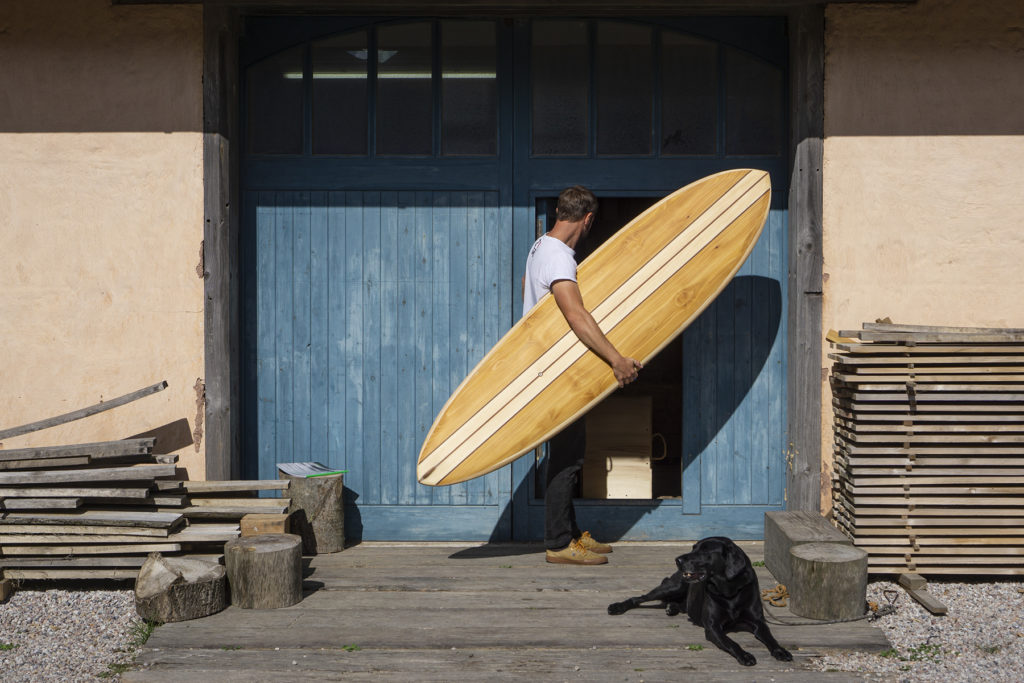Nigel Oxenden with his wooden bellyboard (complete with a leash, long before they became standard issue!) in the early 1920s.
WWII interrupted Surfing and wave riding on Jersey’s west coast for the first half of the 1940s however, when the Channel Islands were invaded and occupied by the Germans. Hitler developed what was referred to as “Island Fever”, believing that the Channel Islands held such a symbolic significance to the British (the Bailiwicks of Jersey and Guernsey were the only part of the British Isles to be captured and occupied by the Wehrmacht) that they would do anything to get them back. He ordered the fortification of the islands and the building of his “Atlantic Wall”, and many beaches were mined. Following the liberation of the Channel Islands it took some time for the beaches to be declared safe again and for the islander’s to rebuild their lives. By the 1950s some sense of normality had returned, and with it, the reintroduction of surfing. This time around, a doctor who had lived in California brought a 10’ Pacific Homes “Waikiki” hollow wooden surfboard (the sort made popular by Tom Blake in the 1930s), followed by the arrival of a group of lifeguards from South Africa who brought surfboards with them. The Jersey Surfboard Club was formed in 1959 and through the 1960s and 70s Jersey was the leading light of British surfing, and a European surf destination. Jersey hosted the European Surf Championships in 1969, 1970 and 1972, and five of the six members of the British team who travelled to the 1968 World Championships in Puerto Rico were Jerseymen; an incredibly impressive history.
POST UPDATE: After contact from the current owner of the Pacific Homes surfboard (Tim from Little Joes Surf Shop), he let us know it’s actually made from solid redwood and balsa and is not like the hollow Tom blake boards. It’s late 30’s as it was earlier called the swastika model and for obvious reasons was then changed to the Waikiki model.













